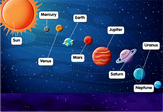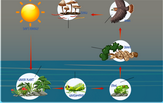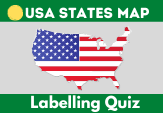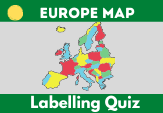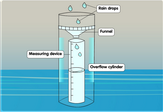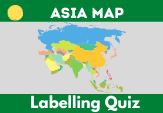Map of continents – drag and drop names
The Earth’s surface contains several landmasses, the largest stretches of which are known as continents.
Navigating the World: Understanding Maps with Continents
For many young learners, the vastness of our planet is both awe-inspiring and slightly overwhelming. However, through the intricate details of maps, students gain invaluable knowledge of geography. With resources like 'maps with continents' and an in-depth 'continent map', K-12 students can embark on a journey of global discovery without ever leaving the classroom. And just to be clear, this journey into the heart of geography is a genuine educational endeavor, far removed from the world of game pirating!
The Intricate Web of Maps Continents Offer
The Map of Continents: An Essential Learning Tool
A 'map of continents' provides more than just an overview of the Earth's landmasses. It serves as a foundational tool in geography, giving students a clearer understanding of the world's layout. From the icy terrains of Antarctica to the vast expanse of Asia, these maps detail our planet's diverse regions.
Why Every Classroom Needs Maps with Continents
Geographical Context: At the heart of geography is understanding the spatial relationships between different regions. By studying 'maps with continents', students gain insights into how nations and landscapes relate to one another, furthering their understanding of global events and histories.
Cultural Appreciation: Understanding the placement and distribution of continents can provide students with a stepping stone to delve deeper into the cultures, languages, and histories that each landmass houses.
Critical Thinking: Interpreting 'maps continents' offer can be a complex task. It encourages students to think critically, analyze patterns, and draw conclusions about migration, trade routes, and more.
Knowledge of Geography: More Than Just Maps
While 'the continent map' is undeniably crucial, true knowledge of geography encompasses a lot more. It includes understanding climatic zones, recognizing the importance of natural resources, and appreciating the intricate web of human civilizations that have thrived across these continents.
A Treasure Trove of Learning, Far From Game Pirating
Our commitment is to provide genuine, accurate, and invaluable educational resources. Our focus on 'the map of continents' is all about nurturing an authentic love for geography in young learners. The mention of pirating here is merely to ensure clarity: our journey is about pure educational exploration, not the unauthorized replication of games.
Charting the Course for Future Geographers
With the right resources like a comprehensive 'continent map', the mysteries of our world become intriguing puzzles waiting to be solved. By fostering a love for 'maps with continents' and the broader scope of geography, we are charting the course for future geographers, explorers, and world citizens.
In essence, by diving deep into the world of 'maps continents' offer, students not only enhance their knowledge of geography but also develop a holistic appreciation for our beautiful, diverse planet."
Schools in the United States and other English-speaking places usually list the world as having seven continents – Asia, Europe, North America, South America, Africa, Oceania, and Antarctica.
You might notice that Asia and Europe actually compose a single, massive stretch of land, which we typically call Eurasia, although we consider them two different continents. This is because people find it easier to separate both continents due to their significant differences in the shared cultures and history of their countries.
Africa also joins to Western Asia through the isthmus in eastern Egypt, in which we can also find the famous Suez canal. Similarly, North and South America meet up in the Central American nation of Panama.
The shape and arrangement of the continents of the world are constantly changing; for example, hundreds of millions of years ago, South America and Africa were connected to each other like pieces of a jigsaw puzzle.
We’re pleased to provide this fully interactive map of the continents – drag and drop names as a fun and easy-to-use reference of the largest landmasses of the world and how they are grouped and classified.

